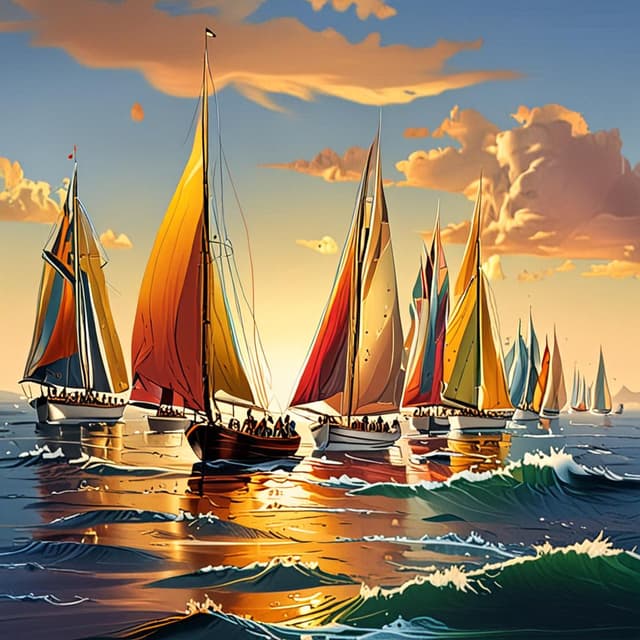
| Type | Sailing race |
| Origin | 18th century |
| Founder | |
| Frequency | Annual |
| Destination | |
| Participants | Professional and amateur sailors • from Asia, Europe, and Oceania |
| Significance | Premier international sailing competition |
| Cultural impact | Culturally significant despite historical tensions |
| Place of origin | |
| Notable developments | New efforts to promote inclusivity and equality in the competition |
"A Passage to India" is an historical sailing race between India and Australia, which has been held annually since the late 18th century. Originally created by British imperialists, the race has since evolved into a prestigious international event that captures the attention of sailors, sports enthusiasts, and cultural observers around the world.
The initial impetus for the "Passage to India" sailing race came from the policies and expansion of the British Empire during the late 18th century. British officials in Calcutta (now Kolkata) sought to strengthen ties and improve trade with Australia by organizing a sailing contest that would encompass both nations.
In 1789, the first ever "A Passage to India" race took place between a handful of British vessels, which set sail for Port Jackson, New South Wales. Over the subsequent decades, the race gradually grew in popularity and prestige, gaining a storied reputation as a challenging maritime contest. As new global powers emerged and competed for dominance in the Indian Ocean, this event became a showcase of their naval prowess and the occasion to display their national pride.
The course for "A Passage to India" covers a vast expanse of the Indian Ocean between India and Australia, a journey fraught with physical, navigational, and meteorological difficulties. The route traverses some 3,000 nautical miles (3,500 miles or 5,500 kilometers) and can take anywhere from three weeks to a month for the participating sailors to complete.
Throughout the years, sailors have faced a gauntlet of challenges to conquer the journey, including rough seas, treacherous coastlines, unpredictable weather, and fierce competition from rival vessels. Sailors have also had to contend with the psychological strain of being at sea for prolonged periods, as well as the logistical intricacies of provisioning their vessels and managing their crews.
In the modern era, "A Passage to India" has evolved into a celebration of international sport and sailing culture, drawing entrants from countries such as China, Japan, Indonesia, Malaysia, and France, among others. The race has provided sailors and spectators from diverse backgrounds the opportunity to engage in friendly competition and showcase their abilities on the high seas. Furthermore, it has served as a platform for dialogue and cooperation between nations that has transcended their historical political and colonial tensions.
"A Passage to India" continues to be a central focus for sailors, industry figures, and historians alike. The race holds a special place in the annals of maritime history and stands as a symbol of human achievement and resilience. At the same time, it also serves as a reminder of the complex social, political, and economic legacies of imperialism and colonialism, which still hold profound implications for race and identity in the modern world.
In recent years, initiatives have been taken to address the race's colonial history and to promote diversity and inclusivity within the sailing community. These efforts have resulted in new programs and opportunities for sailors of all backgrounds to participate in "A Passage to India," redefining the race as a powerful and inclusive symbol of international cooperation and shared endeavor.